
Phormium, New Zealand flax: planting, pruning, care
Contents
New Zealand flax in a nutshell
- Phormium is a perennial plant with very exotic-looking evergreen foliage
- Hardy down to −8 °C, it is an essential plant in maritime climates
- It grows in large, striking clumps, plain or variegated
- Architectural plant, it provides structure to large coastal beds and expansive rockeries
- Once well established in sun, it requires no maintenance
A word from our expert
Attractive all year round, Phormium or New Zealand flax is a beautiful evergreen perennial with a particularly exotic look. Its sword-shaped leaves, held upright, give the garden an exotic, transportive atmosphere throughout the year, even when New Zealand flax is in flower, a trend that has grown in recent years.
Having moved out of coastal beds where it once seemed confined, this landscapers’ favourite, become the must-have plant of modern gardens, is unquestionably the centrepiece for a large exotic rockery or for clean, mineral or contemporary schemes.
Whether variegated New Zealand flax or purple or red forms, used as a solitary specimen or planted in groups, Phormium provides structure and brings verticality and an exotic touch to all settings, from the most lush to the most restrained.
This lush, highly architectural perennial, though frost-sensitive and preferring the mild, humid climates of our Atlantic coasts, is ideal in gardens spared from severe frosts. Elsewhere, grow it in a large pot and bring it indoors to a conservatory or greenhouse for winter.
Not prone to disease and tolerant of occasional drought once well established in well-drained, cool, fertile soil, New Zealand flax is very undemanding. It is among the plants most tolerant of sea spray, strong winds and salt.
Does phormium tenax show greater cold hardiness than Phormium cookianum? How to prune or cut a phormium? Discover all the growing secrets of our New Zealand flax plants.
Description and botany
Botanical data
- Latin name Phormium
- Family Agavaceae
- Common name New Zealand flax
- Flowering July to August
- Height 0.30 to 5 m
- Exposure Sun, partial shade
- Soil type light, sandy, well-drained
- Hardiness -7°C
Genus Phormium includes two species of perennials, the species cookianum or “mountain phormium” and Phormium tenax, which grow in marshy meadows, along watercourses and on rocky escarpments up to 1 500 m altitude in New Zealand. While Phormium tenax, the species most commonly cultivated, acclimatises to all our regions, Phormium cookianum, accustomed to humid climates, naturally grows by the sea on our ocean-facing coasts.
These two species, commonly called “New Zealand flax”, belong to family Agavaceae or to Phormiaceae, depending on classification. They have produced numerous hybrids and cultivars offering a wide palette of colours and variegations or pink- and red-striped patterns unlike any other plant.
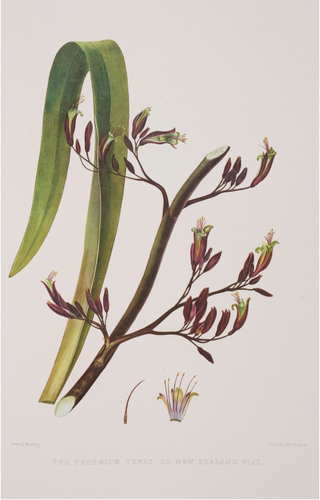
Phormium or New Zealand flax – botanical illustration
In its natural habitat, this cousin of agaves can reach over 3 metres in height. In gardens, plants are usually smaller.
Both develop fairly quickly into a broad, dense rootstock clump that is not running, composed of many rosettes with a habit both erect and bushy. Habit may be arching or flared like a grass, depending on cultivar. Their growth is irregular and agreeably anarchic: some leaves arch when young while older, stiffer leaves grow at right angles. They arch gracefully to form a fountain-like habit in Phormium cookianum.
P. tenax is the larger and more vigorous of the two New Zealand species and typically reaches at maturity 2 to 2.50 m in all directions, sometimes more depending on growing conditions. Phormium cookianum (or P. colensoi) shows less vigour and forms more modest clumps of 0.60 m to 1.60 m. Cultivars are generally less vigorous than their parents and offer intermediate sizes.
Naturally rather slow-growing, the clump thickens over the years thanks to numerous rootstocks that allow lateral spreading without ever becoming invasive.
New Zealand flax is spectacular for its evergreen foliage with a very graphic appearance, sword-shaped and erect towards the sky. From a bundle of leaves folded at the base and imbricated like a fan arise
The two species have produced many hybrids offering an infinity of solid colours, sumptuously variegated tones or subtly striped shades of cream, copper, yellow, green, bronze-tinged orange, bluish bronze or purple. Green-yellow in variety Golden Ray, almost black in Phormium cookianum Black Adder, orange-pink to purplish-pink in ‘Margaret Jones’, apricot-pink edged with olive green to bronze-green in ‘Rainbow Sunrise’, tones of pink, purple, bronze, brown and ruby-red in ‘Pink Panther’, or pale yellow tinted lime-green and traversed by numerous green striations along their length in ‘Yellow Wave’.
If this perennial surprises with the brightness and range of its foliage, its flowering, when it occurs after several years of cultivation, is equally remarkable. Flowering is rare and even scarce in some varieties.
In summer, from May to July depending on climate, long leafless flower stems appear above the foliage clump, sometimes reaching up to 4 m in height. Small tubular flowers 2 to 5 cm long, greenish-yellow or dull red at maturity, consisting of six petals, open in large numbers, grouped in upright panicles.
Flowering causes the rosette that produced it to die, but generates the birth of a new shoot.
This very nectariferous flowering attracts certain birds and many pollinating insects.
It is followed by formation of spiralled fruits that are pendulous in Phormium cookianum or erect in Phormium tenax, appearing as capsules filled with seeds dispersed by wind at maturity.

Phormium tenax hybrid, leaves, flowers and pods containing seeds
Beneath this exotic appearance, phormium is hardier than expected, tolerating temperatures from -7°C to -10°C, sometimes lower depending on growing conditions. Unaffected by disease and pests, it tolerates sea spray, pollution, wind and high heat without complaint.
It is very undemanding and easy to grow in regions with mild winters. In open ground, reserve it for Mediterranean or Atlantic climates according to species, where it grows in sun in very well-drained yet cool, fertile soil. Elsewhere, growing in a very large pot and sheltering in a conservatory during the bad season is preferable.
Used as a solitary specimen or planted in groups, phormium structures space and brings an exotic charm to modern gardens as well as more natural settings. This New Zealand native fits into all landscapes, its striking graphic habit being especially valuable in contemporary minimalist scenes as well as in rock gardens or dry gardens. In cold regions, it adds a contemporary note to terraces and balconies.
Maori worked Phormium fibres as we use flax to make baskets, ropes, mats, clothing… hence its vernacular name of “New Zealand flax” or “mountain flax”.
Read also
Cordyline : to plant, to grow, to careSpecies and main varieties
There are mainly two species of phormium, with noticeably different appearance. Most varieties on the market are hybrids of these species, which are declinate into purple forms such as ‘Purpureum’, variegated (‘Golden ray’, ‘Variegata’, ‘Cream Delight’) or finely striped in pink and red (‘Evening Glow’).
Most common in our gardens is Phormium tenax, the great flax of New Zealand, a giant perennial whose erect leaves can reach up to 2–3 m in height and spread.
Phormium cookianum, accustomed to coastal areas, smaller, forms much smaller clumps, even dwarf, sometimes not exceeding 50 cm. Its leaves droop into a fountain habit. It is particularly suitable for container cultivation.
Intermediate sizes (about 1.2 m tall) can also be found, such as Phormium cookianum ‘Tricolor’.
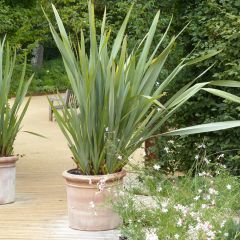
Phormium tenax - New Zealand Flax
- Flowering time July, August
- Height at maturity 2 m
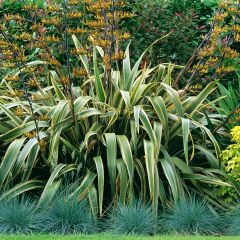
Phormium tenax Variegatum - New Zealand Flax
- Flowering time July, August
- Height at maturity 2,50 m
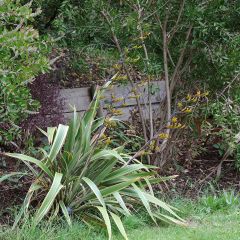
Phormium cookianum subsp. hookeri Tricolor
- Flowering time July, August
- Height at maturity 1,50 m
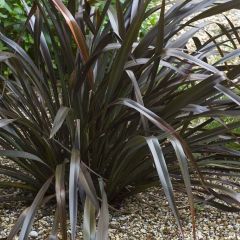
Phormium cookianum Black adder
- Flowering time July, August
- Height at maturity 1,20 m
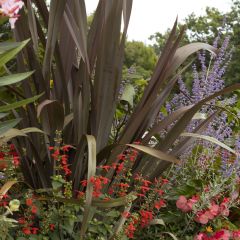
Phormium tenax Purpureum - New Zealand Flax
- Flowering time July, August
- Height at maturity 2,50 m
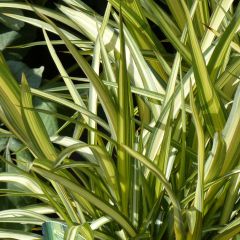
Phormium cookianum subsp. hookeri Cream Delight
- Flowering time July, August
- Height at maturity 1,50 m
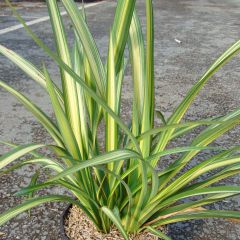
Phormium Golden Ray - New Zealand Flax
- Flowering time July, August
- Height at maturity 1,50 m
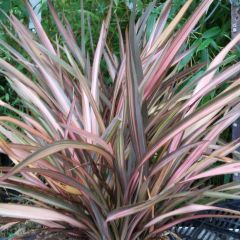
Phormium tenax Rainbow Sunrise - New Zealand Flax
- Flowering time July to September
- Height at maturity 1 m
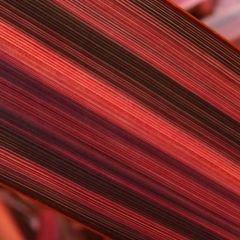
Phormium tenax Margaret Jones
- Flowering time July, August
- Height at maturity 90 cm
Discover other Phormium
View all →Available in 0 sizes
Available in 1 sizes
Available in 1 sizes
Available in 2 sizes
Available in 2 sizes
Available in 3 sizes
Available in 1 sizes
Available in 2 sizes
Available in 1 sizes
Available in 1 sizes
Planting
Where to plant New Zealand flax?
Phormium is a fairly tender perennial, particularly the coloured forms. Quite frost‑sensitive, it nevertheless withstands down to -7°C in ground, sometimes more, under a well‑aerated mulch and in dry, well‑drained soil; it is a little less hardy in a pot. The most colourful forms are less robust.
It is easy to to grow in ground where frosts are light and short‑lived. Here, it prefers coastal locations; elsewhere its hardiness is often severely tested. Resistant to wind and sea spray, it is a good plant for the seaside, ideal for coastal gardens.
Phormium tenax (and its cultivars) is more drought‑resistant once well established and perhaps better suited to Mediterranean climates, while Phormium cookianum prefers wetter Atlantic coastal regions, contrary to what is sometimes written.
Both prefer deep soil that stays cool in summer and does not dry out, to develop well into clumps.
It does not withstand severe frosts, which is why in colder climates it should be grown in a pot and brought indoors for winter. Elsewhere, in regions with a mild climate, plant Phormium in ground, in full sun, in loose, rather sandy, well‑drained, deep and fertile soil.
Choose a position suitable for its eventual size: after five years its habit becomes apparent, often occupying more than one metre in width!
Used as a specimen or planted in groups, it structures space and brings verticality and an exotic feel to the garden. It fits wonderfully into gravel gardens and dry rockeries, as well as in large drifts of slightly informal perennials, to which it adds relief and scale.
It will add an exotic touch to balconies, terraces and urban gardens.
When to plant Phormium?
Planting New Zealand flax is preferably done in spring, from March to April or in late summer, from September to October.
How to plant Phormium?
In rich, well‑drained soil, Phormium will be more vigorous and more tolerant of frost. If your soil retains moisture, do not hesitate to plant your Phormium on top of a mound, where water will not stagnate. However, ensure the plant does not lack water, particularly during first summers after planting.
In ground
- Loosen soil well and dig a hole 2 to 3 times pot volume
- Add a good layer of gravel to bottom of hole to improve drainage
- Plant Phormium at collar level in centre of hole
- Mix in a blend of potting compost for Mediterranean plants and compost into excavated soil
- Refill hole then firm lightly with foot
- Mulch base and water abundantly at planting then once to twice a week during growth in first year after planting
In a pot
Substrate must be rich and very free‑draining for good root aeration and to avoid stagnant moisture. Place in full sun.
- In a large pot of at least 50 cm diameter, lay a good drainage layer (gravel or clay pebbles)
- Plant in a mix of potting compost and slightly sandy garden soil enriched with compost and a handful of horn meal
- Mulch base
- In summer, water as soon as substrate is dry (about once a week)
- Apply a liquid fertiliser diluted in watering water once a month during growth
- Bring pot inside to shelter from frost in autumn in cold regions and reduce water and fertiliser: let soil dry between waterings
→ Learn more in our advice sheet : How to grow Phormium in a pot

Read also
Agave: planting, growing, and caring forMaintenance, pruning and care
Phormium is easy to grow in regions where winters are not harsh.
In open ground
Protect plant base with a thick mat of gravel or dead leaves to conserve soil moisture in summer and protect roots from cold in winter. In harsh climate, wrap foliage in winter protective fleece.
During first two summers, ensure plant does not lack water and that soil is never too dry nor waterlogged: plant base must remain cool. Once well established in well‑draining soil, it will become increasingly drought‑resistant.
Thereafter, water every two weeks, no more, and only in case of prolonged drought in southern France. Elsewhere, in wetter regions, water more moderately in summer. In winter, it survives on rainfall.
In open ground, Phormium does not need fertiliser.
In pots
Plants grown in pots are fairly demanding and require more attention. Water abundantly during period of growth: soil must never dry out completely. Feed plant with a liquid fertiliser diluted in watering water, once a month.
In winter, reduce waterings and fertiliser applications, and allow soil to dry between waterings. Repot every 2 years.
How to prune Phormium?
Pruning is limited to a simple spring tidy. From March to April, using a pruning shear, cut spent flower stems 20 cm from soil and cut faded or withered leaves back to ground level.
Read also : Phormium: how to protect it from cold and overwinter it?
Potential diseases and pests
Phormium is little affected by parasitic organisms, diseases or air pollution. Young plants can, however, suffer attacks by mealybugs, recognisable by the cottony masses they leave on the plant. They slow growth and discolour the foliage. Treat with rapeseed oil sprays. Repeat two or three times at 15-day intervals.
Propagation
Sowing is possible in February–March but we recommend instead the removal of young shoots in autumn. The division of a large clump can prove quite difficult, phormium being particularly tough! Avoid damaging fragile roots.
- With a spade, free young shoots at the edges (or a good-sized clump), taking care not to damage the roots
- Cut leaves back by half
- Replant offsets into individual pots or plant the clump in the ground in a hole large and deep enough, enriched with a well-draining mix of potting compost and gravel
- Backfill, firm down, then water generously and keep soil moist but not waterlogged until growth resumes
→ Learn more about dividing Phormium in Alexandra’s tutorial!
Companion plants for Phormium
New Zealand flax with its spectacular ribbon-like leaves in striking colours ranging from olive green to almost black-purple and including cream, pink or apricot variegations, upright and sword-shaped, is always an important focal point in a garden or in a pot on a balcony or terrace.
Its sharp yet elegant foliage and its striking year-round silhouette lend themselves to many uses and always bring character, exoticism and verticality to a setting. It allows the composition of original and very colourful scenes.
Undisputed star of exotic-, contemporary- or Mediterranean-inspired gardens, phormium fits into all gardens, even coastal ones, whether structured, wild or natural, where it provides relief and scale throughout the four seasons.
With their architectural habit, large phormiums (Phormium tenax ‘Purpureum’, Phormium tenax ‘Variegatum’) are perfectly suited to create a spectacular centre of interest and to structure a bed of perennials and small bushes. Used in isolated clumps, they also make very ornamental groundcovers underplanted with mat-forming perennials such as verbenas, petunias or delospermas.
Easy to combine with each other or to associate with other Asian plants, such as Japanese grasses, they also appreciate the company of Chinese palms. For a modern bed with an exotic feel, surround them with giant cannas, large dahlias and bulbs of Watsonias, Kniphofias, Crocosmias.
Companion plants may die back over the seasons, but phormium will continue to draw the eye with its long colourful straps.
In naturalistic scenes, it makes a striking combination when mixed with large ornamental grasses such as pennisetums or miscanthus, allowing magnificent pairings of form based solely on interplay of evergreen foliage.
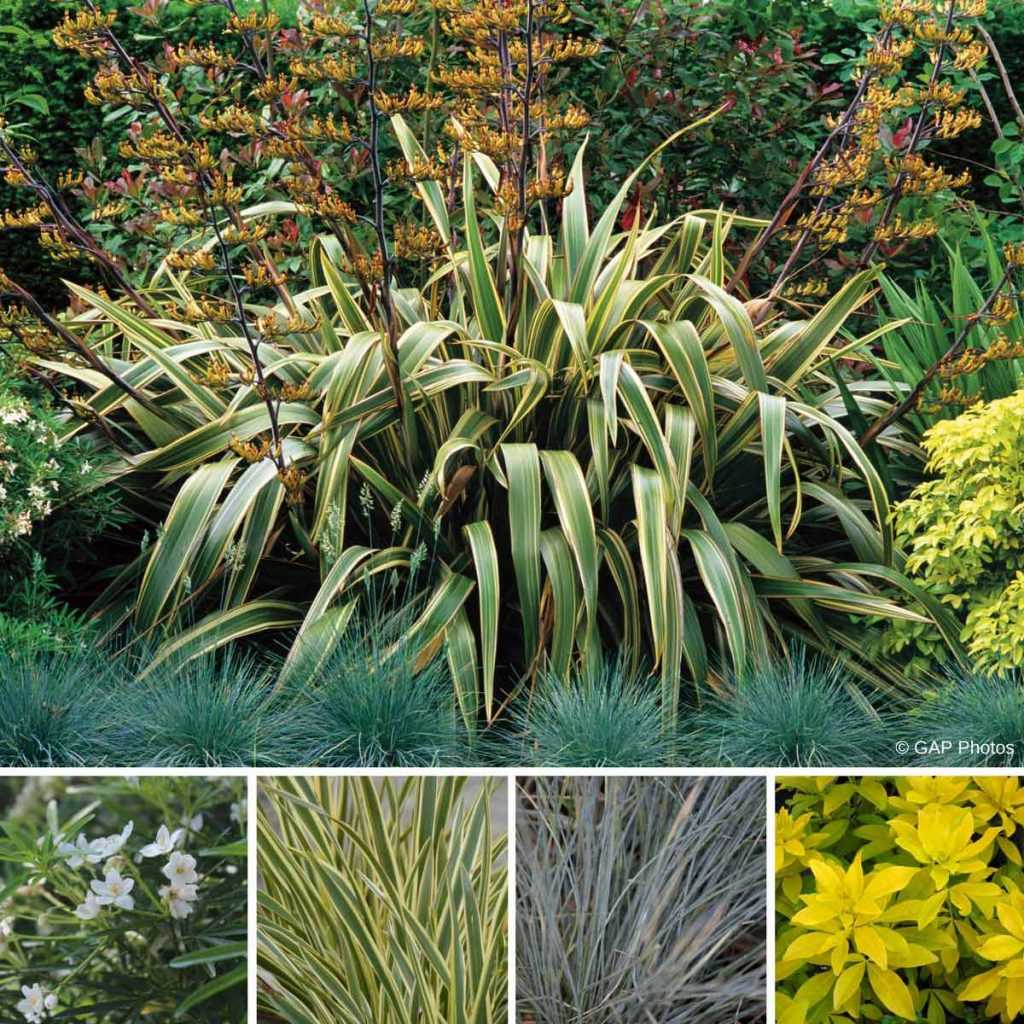
A contrasting combination: Phormium tenax ‘Variegatum’, flanked by two Mexican orange blossom (Aztec Pearl and Sundance) and accompanied by a border of Festuca glauca.
For a contrasting scheme, pink and purple varieties (‘Evening’, ‘Margaret Jones’, ‘Pink Panther’) will complement each other when paired with Leptospermum scoparium ‘Red Damask’, with a clump of Muhlenbergia capillaris, a true pink cloud in late summer, with Melianthus major, with Leucadendron ‘Safari Sunset’, with a Colocasia ‘Sangria’, with Lophomyrtus ‘Magic Dragon’, or with Callistemon or Ricinus communis ‘Carmencita Rouge’.
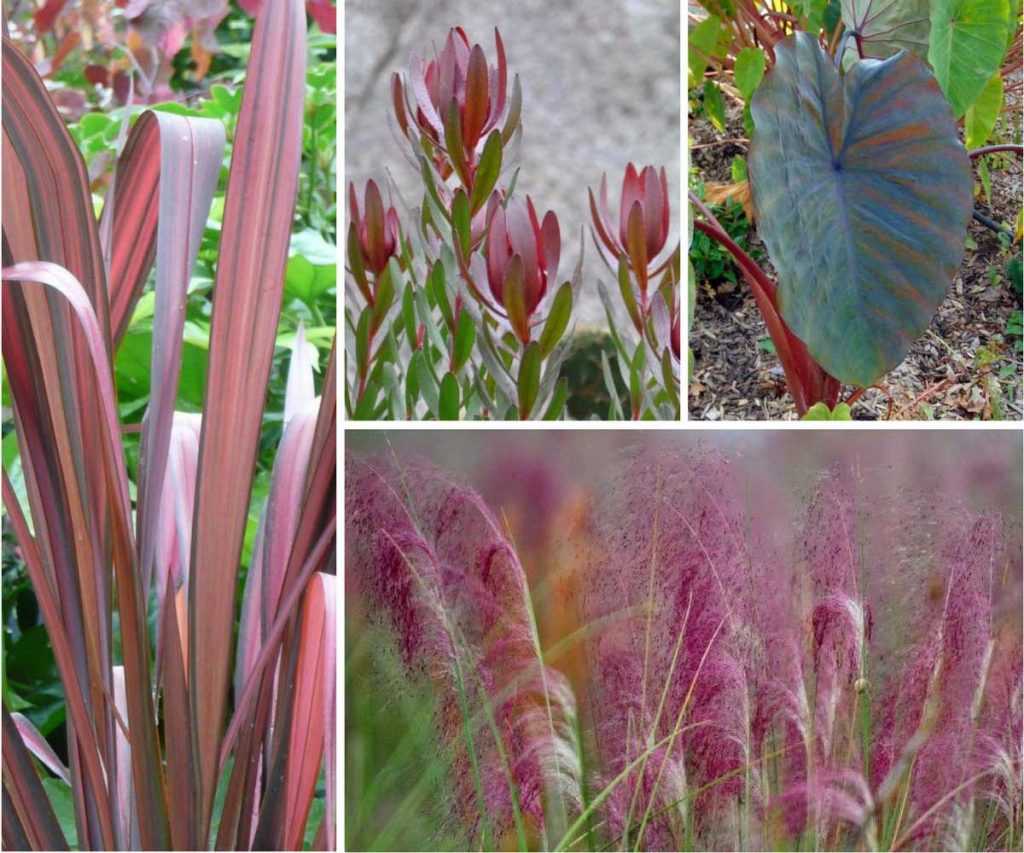
A pink-toned combination: Phormium tenax ‘Evening Glow’, Leucadendron ‘Safari Sunset’, Colocasia ‘Sangria’ and Muhlenbergia capillaris
In a modern garden with clean, mineral lines such as a scree garden or dry garden, it pairs wonderfully with other equally architectural and easy-care plants such as bamboos, cordylines and yuccas in very contemporary compositions. It is a remarkable plant that also harmonises with lush foliage of banana plants or with the structural architecture of palms, a Dasylirion glaucophyllum or agaves.
In a seaside garden, it is the ideal companion for plants that, like it, come from Oceania such as Pittosporum tenuifolium ‘Tom Thumb’, Pseudopanax ferox or Olearia macrodonta ‘Major’ (New Zealand holly).
In a large pot, it will produce a sumptuous effect in a tapetum of verbenas or, when paired with a pelargonium, will give a truly exotic aspect alongside a Trachycarpus wagnerianus or miniature palm.
→ Discover other ideas for pairing with phormium in our advice sheet !
Useful resources
- New Zealand flax can be tender: discover our article to choose which Phormium to plant for your region.
- Our buying guide: How to choose the right Phormium?
- Also discover our advice sheet: plants resistant to sea spray
- Our advice sheet: How to grow Phormium in a pot
- To care for your Phormium: Diseases and parasitic pests of Phormium
Frequently asked questions
-
How to prune Phormium?
It's easy! We're talking about a single spring clean. In March–April, with a pruning shear, if you were lucky enough to see your plant flower, cut spent flower stalks back to 20 cm above soil. Cut faded or withered leaves back to soil level to aerate the clump and keep plant healthy.
-
Plusieurs causes possibles — voici comment diagnostiquer et agir rapidement. Signes et causes courantes - Vieillissement naturel : les vieilles feuilles jaunissent à la base puis sèchent. C’est normal si le cœur reste vert. - Excès d’eau / pourrissement des racines : jaunissement généralisé, feuilles molles, base ou col de la plante brun et spongieux, mauvaise odeur. Phormium n’aime pas les sols compactés ou détrempés. - Manque d’eau : feuilles qui jaunissent et sèchent en commençant par les pointes, planté en plein soleil sans arrosage suffisant. - Carence nutritive : jaunissement homogène (carence en azote) ou chlorose entre les nervures (carence en fer sur sols calcaires). - Gel / stress thermique : jaunissement et noirissement des pointes après gelées ou variations thermiques. - Parasites / maladies : cochenilles, thrips, pucerons ou maladies fongiques peuvent provoquer jaunissement et dépérissement localisés. - Brûlure saline ou engrais excessif : jaunissement net des feuilles et bords brûlés. Que faire — diagnostic rapide 1. Vérifier le substrat : enfoncez le doigt à 5–10 cm pour sentir l’humidité. Si le sol est gorgé d’eau, risque de pourriture. 2. Inspecter la base : col de la plante foncé, racines molles → probable pourriture. Racines saines = fermes et blanchâtres. 3. Examiner feuilles et tiges : présence de parasites (petits points, substance collante, toiles) ou taches suspectes. 4. Regarder l’exposition : trop d’ombre peut rendre le feuillage terne ; plein soleil chaud peut provoquer dessèchement. Remèdes pratiques - Si excès d’eau / pourriture : améliorer le drainage (ajouter matériau drainant, surélever la plate-bande), arrêter les arrosages excessifs. Pour pot, sortir la plante, tailler racines mortes et rempoter dans un mélange drainant. - Si manque d’eau : arroser régulièrement et pailler pour conserver l’humidité. - Pour carence nutritive : apport d’un engrais équilibré au printemps ; si chlorose ferrique suspectée, appliquer du chélate de fer selon notice. - Pour gel : couper les feuilles gelées et protéger la plante les prochaines saisons (paillage, voile). - Pour parasites : éliminer manuellement, laver à l’eau savonneuse, appliquer savon insecticide ou huile horticole. Pour infestations importantes, utiliser produit adapté. - Taille : retirer les feuilles jaunes mortes à la base pour aérer la plante et faciliter la reprise. - Si doute sur une maladie fongique avancée : traiter avec fongicide adapté ou remplacer pieds trop atteints. Prévention - Planter en sol bien drainé, éviter les terres lourdes collantes. - Pailler, arroser modérément. - Fertiliser modérément au printemps. - Surveiller régulièrement feuilles et collet. Si vous me décrivez plus précisément les symptômes (type de jaunissement, localisation sur la plante, conditions de culture, en pot ou en pleine terre, photos), je peux proposer un diagnostic plus ciblé et un plan d’action précis.
New Zealand flax prefers well-draining, even sandy, soil. It dislikes waterlogged soils. With excess water, its leaves may start to yellow. When grown in the ground, water moderately, as leaves can rot if there is excess moisture. For plants grown in pots, provide good drainage (gravel, clay pebbles...) and allow soil to dry out between waterings.
- Subscribe!
- Contents































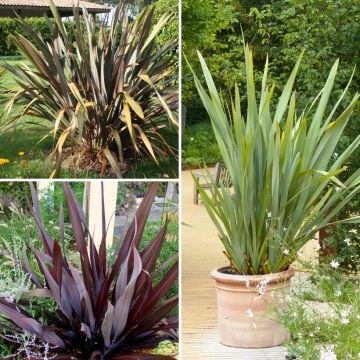

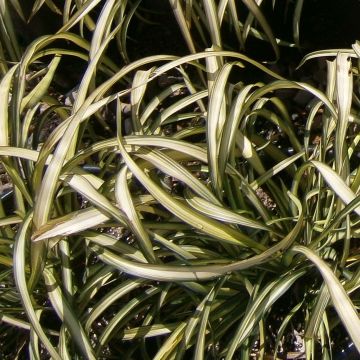

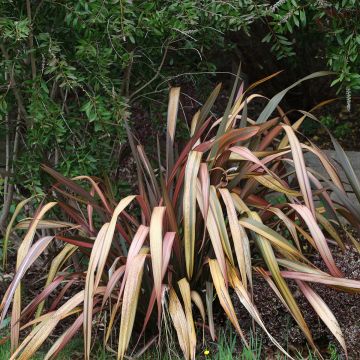

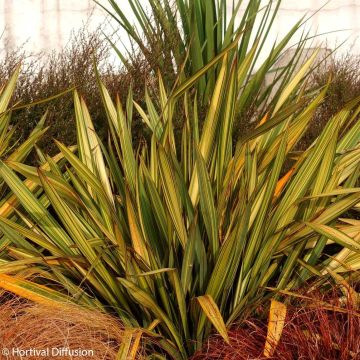

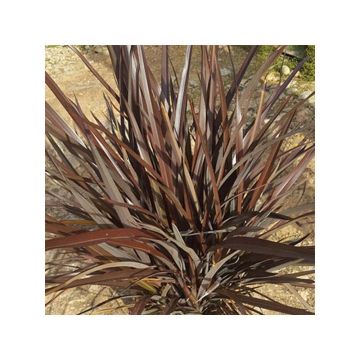
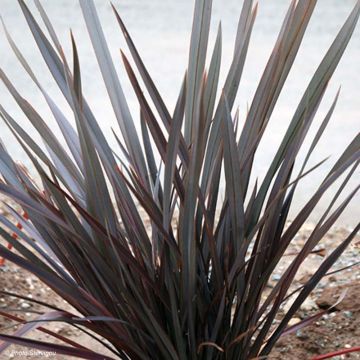
Comments